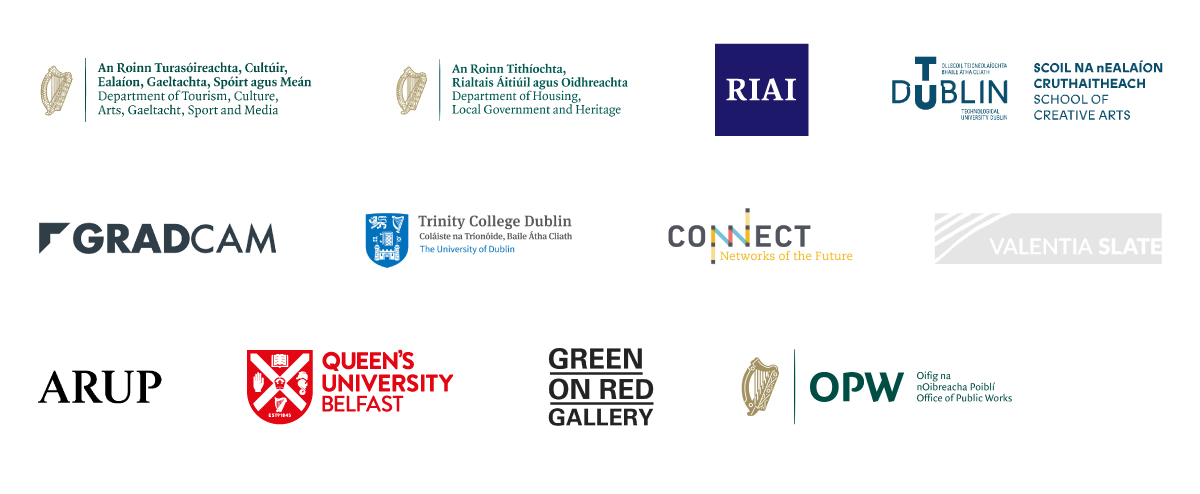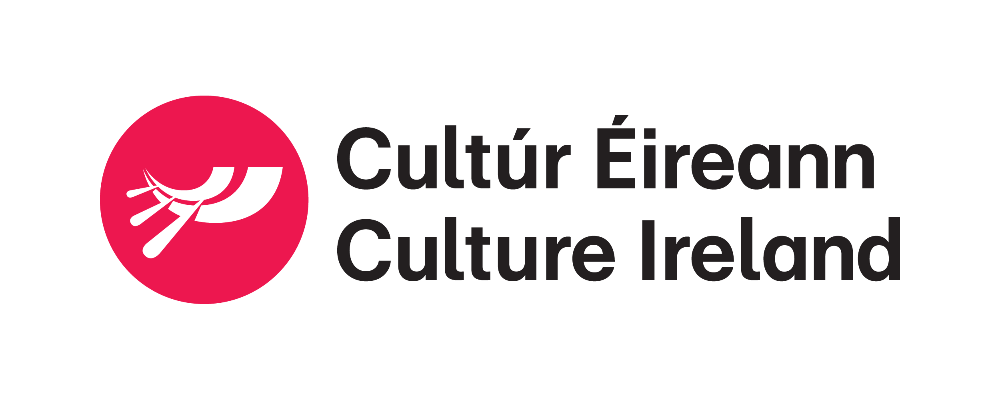Ireland at the 17th International Architecture Exhibition, La Biennale di Venezia
22 May to 21 November 2021
ARSENALE,
SESTIERE CASTELLO,
CAMPO DELLA TANA 2169/F
30122 VENICE, ITALY
Context
The Irish pavilion at the 17th International Architecture Exhibition of La Biennale di Venezia, Entanglement, explores the materiality of data and the interwoven human, environmental, and cultural impacts of information and communication technologies. It highlights how data production and consumption territorialise the physical landscape, and examines Ireland’s place in the pan-national evolution of data infrastructure through raising awareness about the material footprint of the global internet and cloud services, which is entwined with the Irish landscape both historically and in the present day, from the landing of the first transatlantic cable at Valentia Island in 1858 and Marconi’s, transmission of wireless radio messages across the Atlantic Ocean in the early 20th century to Ireland’s current role as Europe’s data centre hub.
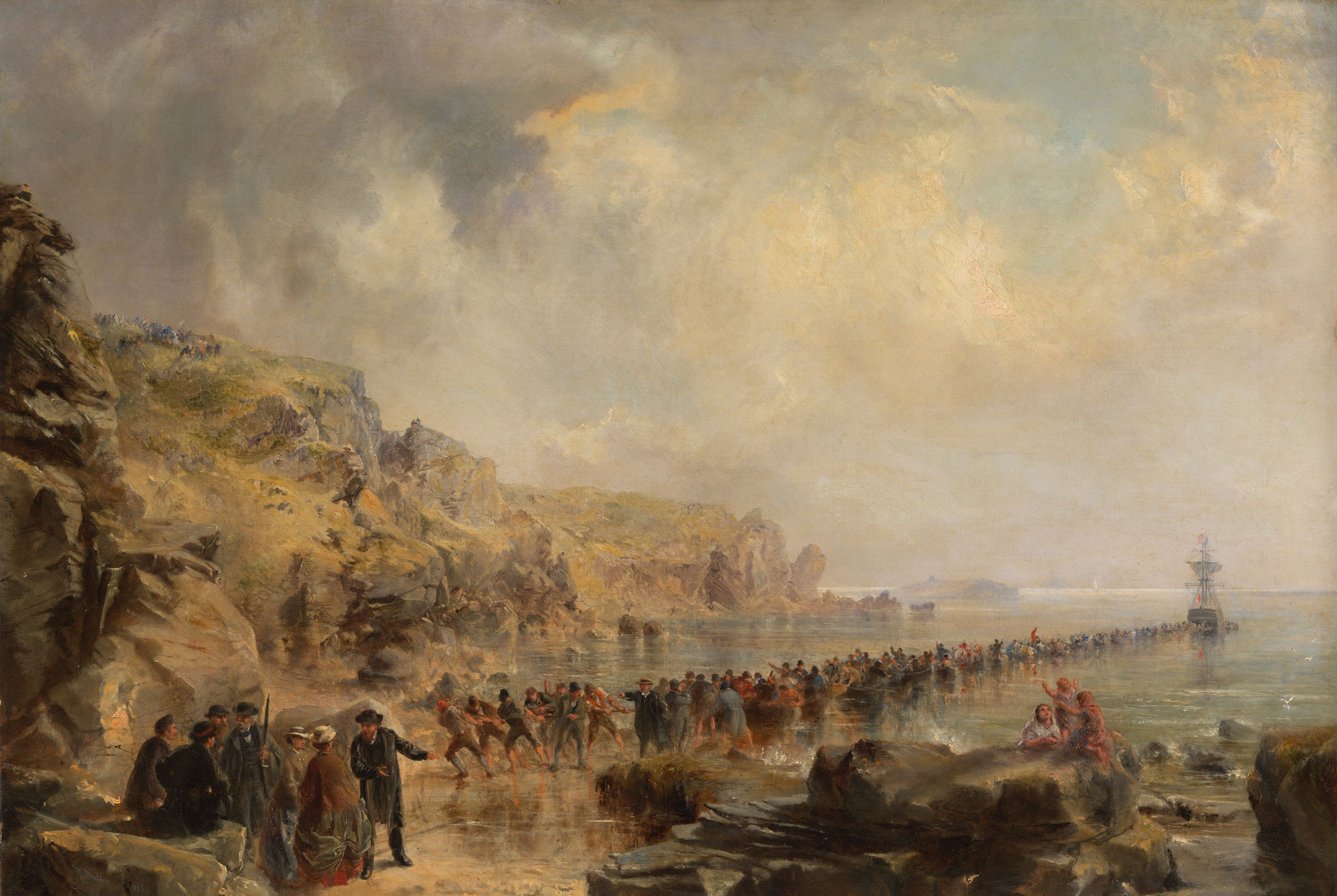
Space
Entanglement uses the prism of heat to explore the material relationship between data infrastructure and architecture through a structure that collapses local- and planetary-scale data infrastructure networks into the most primitive of socialising technologies: the campfire.
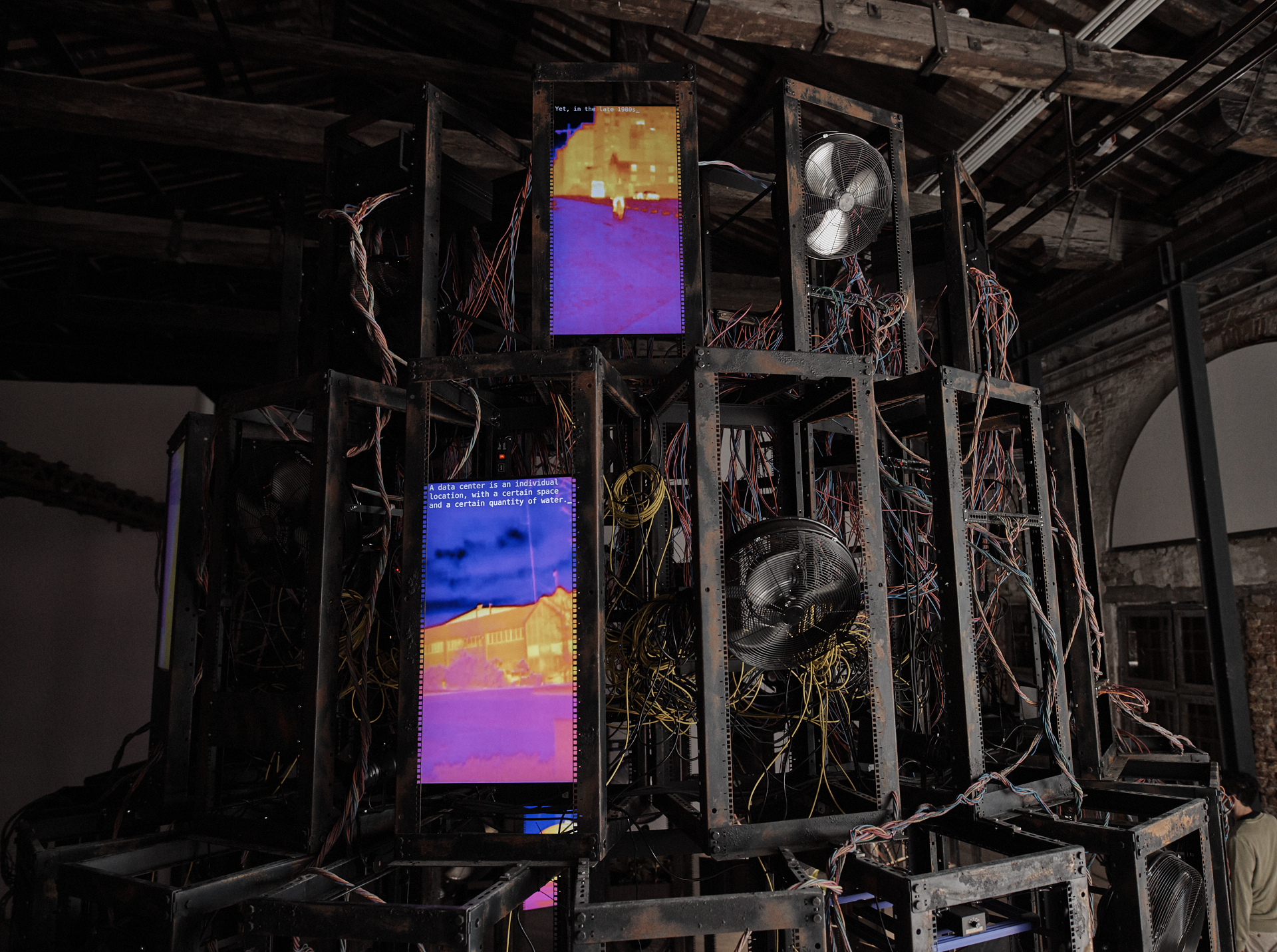
The pavilion draws from both contemporary and historical data storage artefacts as building blocks to form its structure. These artefacts are assembled in a campfire formation, referencing this primitive architectural space where early human civilisations formed alliances, built social networks, and eventually developed complex societies. The pavilion asserts that from the burning of campfire logs to the management of waste heat generated by contemporary data infrastructure, the production and distribution of information is intrinsically connected to the production and distribution of heat and fire. A software system is the performative brain of the pavilion and allows for the control and sequencing of a range of media components in the structure: screens, speakers, lights, cameras, and fans into different states that last for 15–20 minute cycles. Specific parameters control the playback of media and the activity of the physical hardware elements in each state to transform the pavilion experientially within the exhibition space. Text displayed on the screens is produced by a machine learning algorithm that has been trained on over 10 million words relating to the field of data infrastructure.
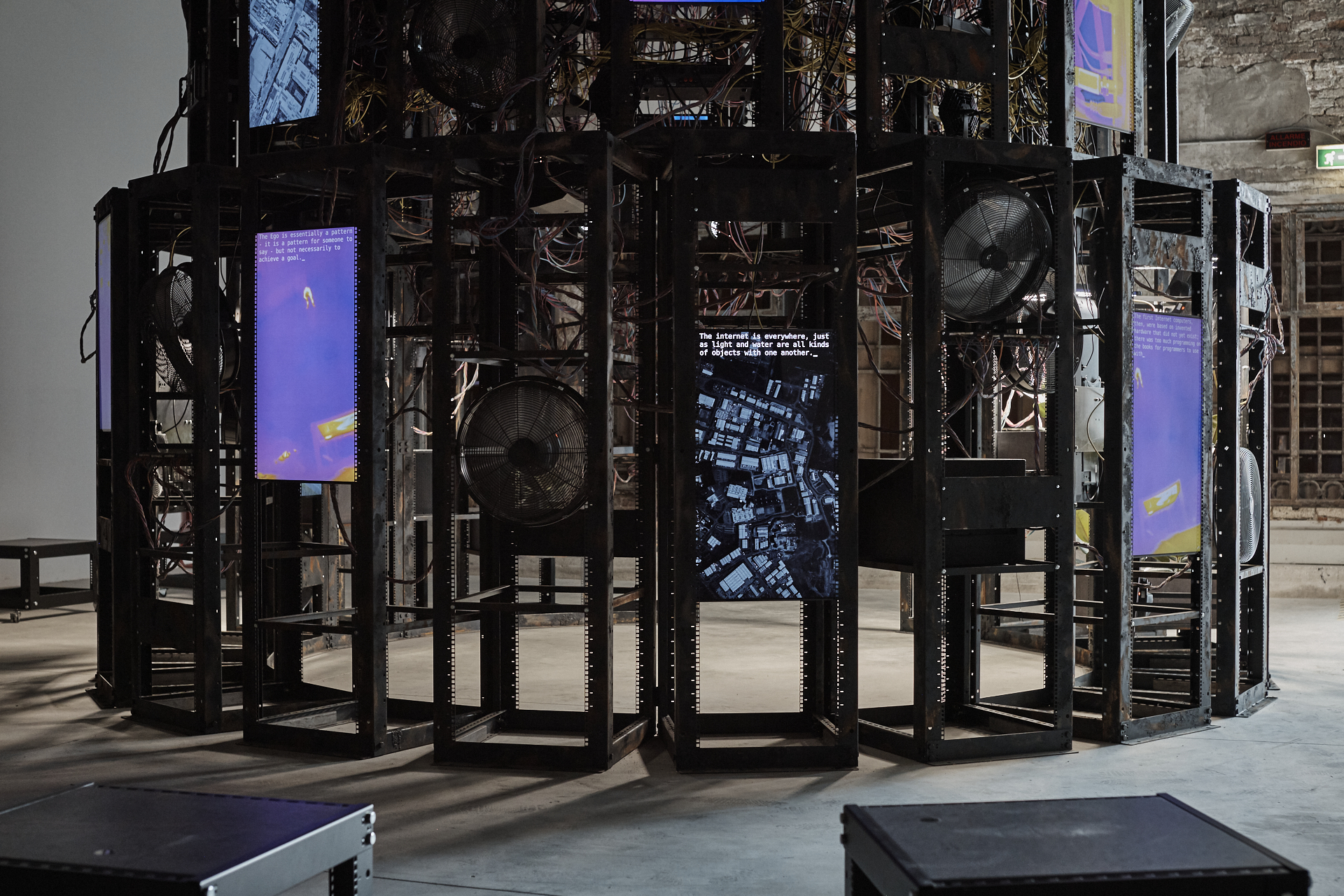
By foregrounding these thermodynamic processes as a link between the architectures of the campfire and the data centre, the pavilion speculates on the relationship between these forms and how diverse communities converge around them in the past and into the future. Highlighting the materiality of our digital age, it subverts a fundamental artefact of the network – the server cabinet – to uncloud the sleek aesthetic of an industry which is forming our realities. The pavilion invites its audience to experience this thermal logic themselves through real-time thermographic imaging technologies that juxtapose key sites associated with data infrastructure in Ireland with traces of human activity in the Arsenale. Entanglement is part pagan festival, part data infrastructure, part signal. It connects bodies, thermal flow, matter, and the environment, to expose the romantic metaphor of the cloud by looking at data infrastructure: it’s materiality, the spaces it produces, and the vast ecological footprint it creates. It argues that the digital is material.
Entanglement responds to the theme selected by the curators of the Biennale Architettura 2021, ‘How will we live together?’, by exploring how we cannot separate our relatively discrete and emotional desires and habits from the influence and pervasiveness of information technologies. This pavilion asks: How do we live in, and with, data?
Ireland at Venice is an initiative of Culture Ireland, in partnership with the Arts Council.
In 2021 the pavilion also has the support of: The Department of Tourism, Culture, Arts, Gaeltacht, Sport and Media; Royal Institute of Architects Ireland; TU Dublin School of Creative Arts; TU Dublin Graduate School of Creative Arts and Media; Trinity College Dublin; CONNECT Research Centre for Future Networks and Communications; University of Illinois at Chicago, Creative Activity Award; Valentia Slate, Office of Public Works and Green on Red Gallery.
